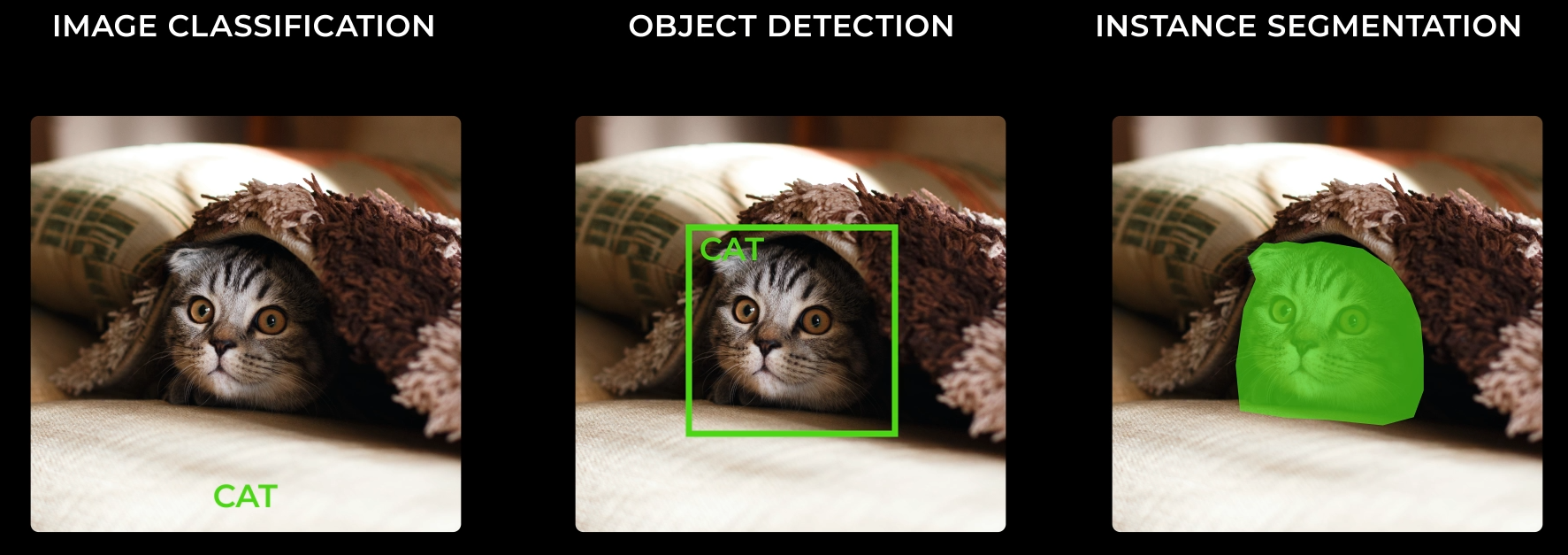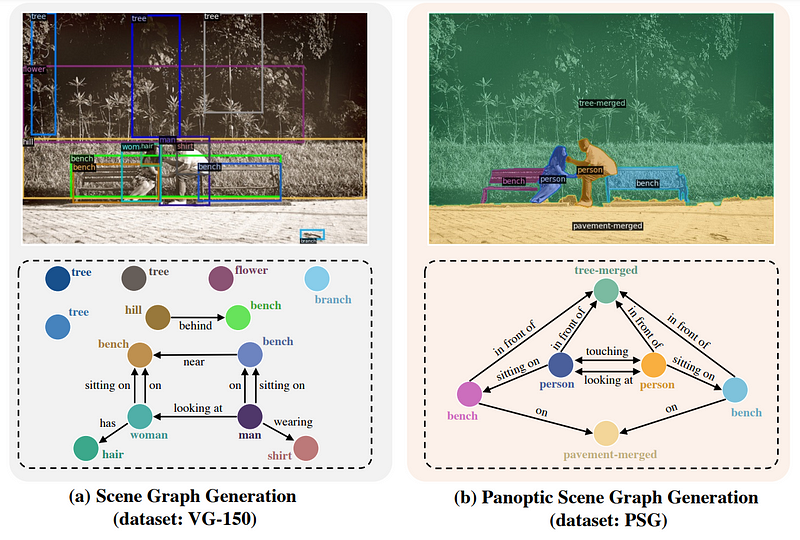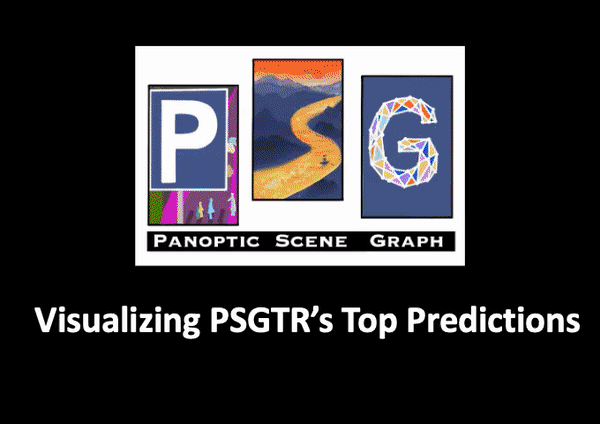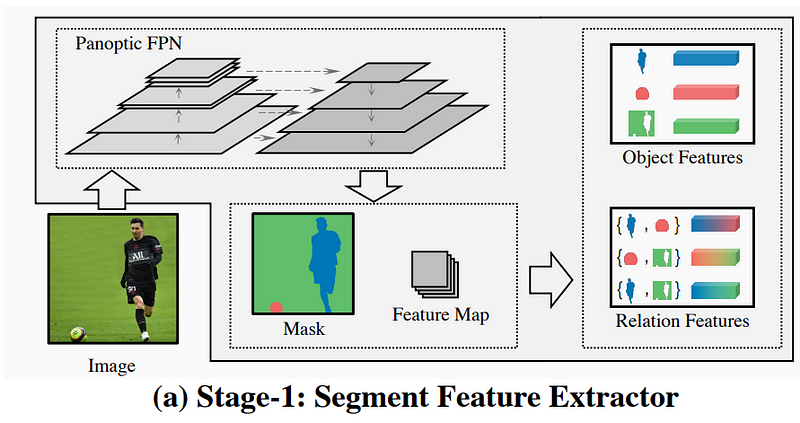One of the Most Challenging Tasks for AI
A New Challenging Task for AI: panoptic scene graph generation

Watch the video
You can use AI to identify what’s in an image, like finding out whether there’s a cat or not. If there’s one, you can use another AI to find where it is in the image. And you can find it very precisely. These tasks are called image classification, object detection, and finally, instance segmentation.

Then you can build cool applications to extract your cat from an image and put it into a fun gift card or a meme. But what if you want an application that understands the scene and image? Not only being able to identify whether there’s an object and where it is, but what’s happening. You don’t want to identify if there’s a customer or not in a shop, but you might want to identify if the customer in question is stealing you. Whether using such surveillance is ethically correct or not is a whole other question you need to consider.
Still, suppose we focus on finding out what’s happening in a scene or a particular picture. In that case, you’d want to use a task called scene graph generation (figure below, left) where objects are detected using bounding boxes, as shown previously with object detection, which is then used to create a graph with each object’s relationship to each other object. It will basically try to understand what’s happening from all the principal objects of the scene. It works quite well and finds out these main characteristics of the image, but there’s a big problem. It relies on the bounding box accuracies and completely disregards the background, which is often crucial in understanding what’s happening or at least giving a more realistic summary.

Instead, you might want to use this new task called panoptic scene graph generation, or PSG (image above, right). PSG is a new problem task aiming to generate a more comprehensive graph representation of an image or scene based on panoptic segmentation rather than bounding boxes. Something much more precise, taking into account all pixels of an image, as we saw.
And the creators of this task didn’t only invent it but they also created a dataset as well as a baseline model to test your results against, which is really cool. This task has a lot of potential as understanding what is happening in an image is incredibly useful and complex for machines even though humans do it automatically. It brings some sort of needed intelligence to the machines, making the difference between being a cool funny app like Snapchat to a product you’d use to save time or complete a need, like understanding when your cat wants to play and using a robot to play with it automatically so it isn’t bored all the time.

Understanding a scene is really cool, but how can a machine do that?
Well, you need two things: a dataset and a powerful model. We know that we have the dataset since they built it for us. Now the second thing: how to learn from this dataset? Or, in other words, how to build this AI model, and what should it do? There are multiple ways to approach this problem, and I invite you to read their paper to find out more. Here’s one way to do it.
But first, give me a few seconds to be my own sponsor and talk about our community! Since you are reading this article, I know you’ll love it as it was basically created for you.
Of course, we have the YouTube community, which you should definitely join. For instance, I’d love to know if you think this task is interesting or not to the AI community.
I also wanted to share our Discord community, Learn AI Together.
It is a place to connect with fellow AI enthusiasts from any skill level, find people to learn with, find people to work with, ask your questions or even find interesting job offers. We are organizing a lot of very cool events and Q&As, like the one we are currently running with the MineRL organizers from Deepmind and OpenAI. The link is in the description below and I’d love to see you join us and exchange there!
What is Panoptic Scene Graph Generation?

As we said, the model needs to find the class of each pixel of the image. Meaning that it has to identify every pixel of the image. The first stage (image above) of the model will be responsible for this. It will be a model, called Panoptic FPN, already trained to classify each pixel. Such a model is already available online and quite powerful. It will take an image and return what we call a mask with each pixel matched to an existing object like a ball, human, or grass in this case. You now have the segmentation, and you know what’s in the image and where. If you are not familiar with how such a model works, I invite you to read one of the articles I made covering similar approaches like this one. The next step is to find out what’s happening with those objects.

Here, you already know it’s a man playing soccer on a field, but the machine actually has no idea. The only thing it knows is that there is a man, a ball, and a field with a lot of confidence, but it doesn’t understand anything and cannot connect the dots as we do with ease. We need a second model (image above, right) trained just to take those objects and figure out why they are in the same picture. This is the scene graph generation step where a model will learn how to match a dictionary of words and concepts covering multiple possible object relations to objects in the scene using the information extracted from the first stage, learning how to structure the objects with each other object.
And voilà!

You end up with a clear graph that you can use to build sentences and paragraphs covering what’s happening in your image. You can now use this approach in your next application and give a few IQ points to your approach, getting it closer to something intelligent!
If you’d like to learn more about this new task, I strongly invite you to read the paper linked below.
Thank you for reading until the end, and I will see you next week with another amazing paper, and congrats to the authors for being accepted to ECCV 2022, which I will attend as well!
References
►Yang, J., Ang, Y.Z., Guo, Z., Zhou, K., Zhang, W. and Liu, Z., 2022. Panoptic Scene Graph Generation. arXiv preprint arXiv:2207.11247.
►Code: https://github.com/Jingkang50/OpenPSG
►Project page (PSG dataset): https://psgdataset.org/
►Try it: https://replicate.com/cjwbw/openpsg, https://huggingface.co/spaces/ECCV2022/PSG
